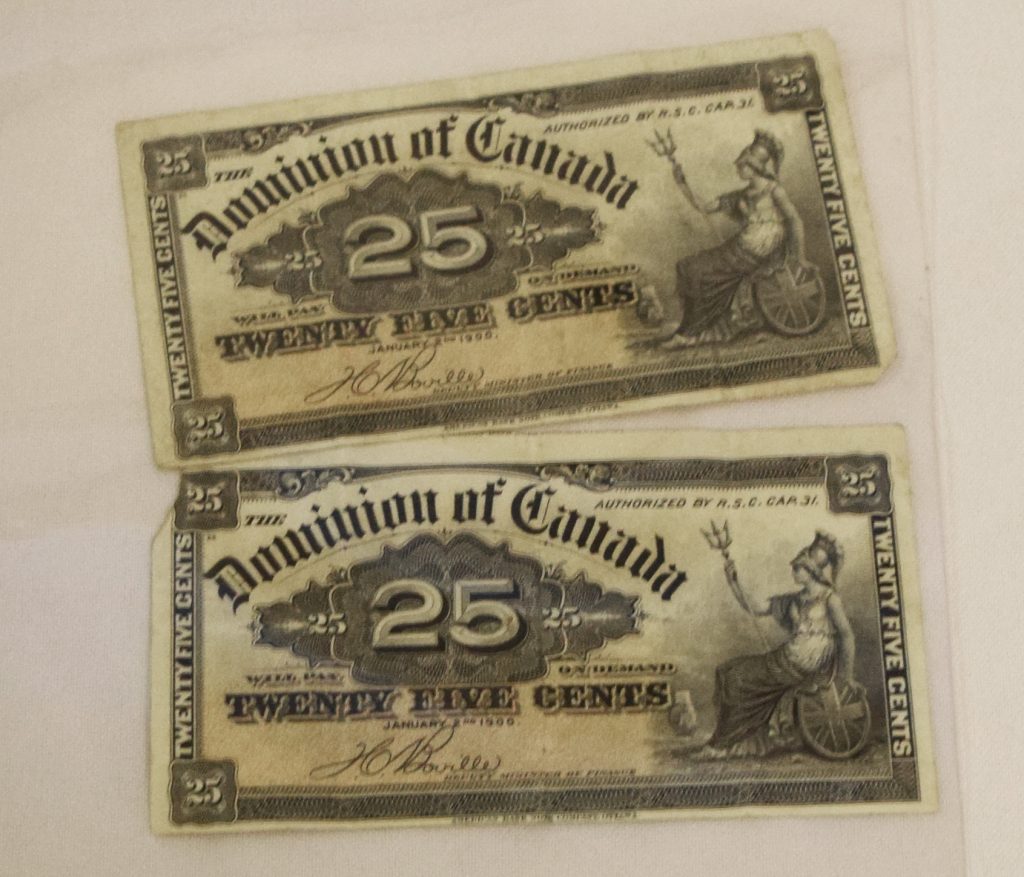These Canadian twenty-five cent banknotes all date to the year 1900. Twenty-five cent Dominion of Canada notes existed from 1870 until 1923, although that was not the plan when they were first introduced. When Canada first became a country (the Dominion of Canada), they needed to adjust their currency from localized currencies issued by each province/colony (such as the Colony of British Columbia, the Province of Canada, Nova Scotia, etc.) to a consistent Dominion of Canada currency, which was first issued in 1870. However, because Canada was still a colony of Great Britain, it was prohibited from minting its own coins. The Canadian government and banks had to wait for a shipment of the new 25 cent coins from the Royal Mint in London. Clearly twenty-five cent coins were popular and waiting for a shipment was too much of a hassle, as the government decided to temporarily include twenty-five cent banknotes, alongside one and two dollar notes, in their first issue of Dominion banknotes. These twenty-five cent banknotes turned out to be very popular, however, so they ended up remaining in print until 1923.
Twenty-five cent banknotes were sometimes also called “shinplasters.” The term shinplaster probably originated during the American revolutionary war to describe small, square patches of paper used by soldiers to cushion their shins against chafing in their boots. Essentially, shinplasters were used as bandages to prevent blisters. The name crossed over into currency soon afterwards with the rise of low-denomination, privately-issued notes, which were worth very little and not widely useable. These notes were seen as so worthless that they might as well be used as shinplasters. This term became common in the United States and Canada for all paper money worth less than one dollar, which, in Canada, would have primarily been the twenty-five cent banknote.
This blog was research and written by Madelyn Huston, UBC.
